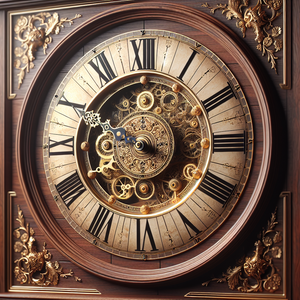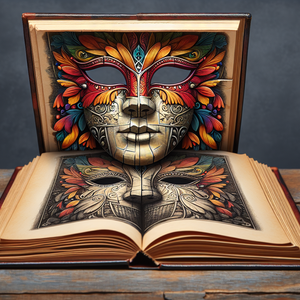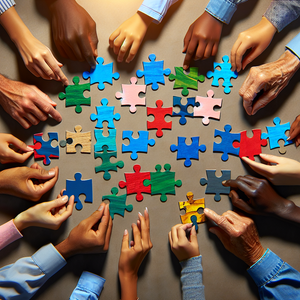Decoding the Psychology Behind Wordle Addiction

At the core of Wordle's allure is the challenge it presents. Each day, players are given six attempts to guess a five-letter word, and with each guess, they receive feedback that guides their next move. This element of challenge triggers the brain's reward system, releasing dopamine—the "feel-good" neurotransmitter—when players make progress or successfully guess the word. This cycle of trial and error, coupled with the incremental feedback, creates an engaging experience that draws players back day after day. The psychological concept of "flow," introduced by psychologist Mihaly Csikszentmihalyi, plays a crucial role in understanding this phenomenon. Flow occurs when a person is fully immersed in an activity that is both challenging and attainable. Wordle strikes a perfect balance; it is challenging enough to stimulate interest but not so difficult that it becomes frustrating. This state of flow keeps players engaged, making them want to return to the game for another fix of mental stimulation.
Supporting Examples
For instance, players often describe the satisfaction of deducing the correct letters through strategic guesses, which enhances their cognitive engagement. The incremental feedback—a letter being marked as correct or in the wrong position—provides a sense of progress that keeps players motivated. As players get closer to solving the puzzle, the excitement builds, reinforcing the desire to play again the next day.
The Satisfaction of Completion
Another compelling aspect of Wordle is the satisfaction that comes from completing the game. The sense of achievement when a player successfully guesses the word in fewer attempts can be immensely gratifying. This feeling of accomplishment is amplified by the game's design, which allows users to share their results with friends and family. The social aspect of sharing scores not only enhances the sense of competition but also fosters a community around the game. Psychologically, this taps into the concept of "social proof." When players share their successes, they validate their skills and invite others to engage with the game. The visibility of others' scores can motivate players to improve their performance, creating a cycle of engagement that keeps the game relevant and exciting. Moreover, the simplicity of the game means that players can easily share their experiences, making it accessible to a wide audience.
Supporting Examples
Consider the countless social media posts where players showcase their results in colorful grids, symbolizing their problem-solving journey. This not only brings personal pride but also invites others to join the experience, reinforcing the game's popularity. The collective experience—where friends or family members compare their results—adds another layer of enjoyment, making each completed game a shared achievement.
The Community Dynamics
Wordle’s design encourages social interaction, another key factor in its addictive nature. Players often share their results on social media platforms, leading to discussions about strategies and word choices. This communal aspect creates a shared experience that fosters connection among friends and family, enhancing the game’s appeal. It transforms a solitary activity into a social event, where players can bond over their successes and failures. The phenomenon is reminiscent of other popular games that incorporate social elements, such as Candy Crush or Among Us. However, Wordle differentiates itself by focusing on language and vocabulary, attracting not just gamers but also word enthusiasts and casual players alike. The communal dynamics also encourage friendly competition, where players can challenge each other to achieve better scores, further driving engagement.
Supporting Examples
For example, discussions on platforms like Twitter and Facebook often involve players sharing strategies and tips for guessing the day's word, creating an informal network of shared learning. Additionally, some players even form groups or forums dedicated to discussing Wordle, further solidifying its role as a social connector.
In a world where digital distractions abound, Wordle stands out as a captivating blend of challenge, satisfaction, and social interaction. The psychological factors that underpin its addictive nature highlight the importance of engagement in gaming. From the thrill of solving a daily puzzle to the communal experience of sharing results, Wordle has transformed how people interact with word games. As it continues to evolve and inspire new variations, understanding the psychology behind its appeal can offer insights into the broader landscape of gaming and social interaction in the digital age. Whether you’re a seasoned player or a newcomer, the allure of Wordle is hard to resist, making it a perfect example of how psychology can enhance our gaming experiences.
Game Designer (Casual/Puzzle Games)
Zynga, Rovio, The New York Times Games
Core Responsibilities
Create engaging game mechanics that enhance user experience and keep players returning.
Collaborate with artists and developers to conceptualize and prototype new puzzle games.
Conduct user testing to gather feedback and iterate on game design for optimal playability.
Required Skills
Proficiency in game design software such as Unity or Unreal Engine.
Strong understanding of player psychology and engagement techniques.
Excellent problem-solving skills and creativity in game mechanics.
User Experience (UX) Researcher
Electronic Arts, Ubisoft, Activision Blizzard
Core Responsibilities
Conduct qualitative and quantitative research to understand player motivations and behaviors.
Analyze user data to identify pain points and areas for improvement in game design.
Collaborate with designers and developers to implement user-centered design solutions.
Required Skills
Experience with UX research methods, including usability testing and surveys.
Strong analytical skills with proficiency in data analysis tools.
Ability to communicate research findings effectively to diverse stakeholders.
Social Media Manager (Gaming Industry)
Epic Games, Riot Games, Supercell
Core Responsibilities
Develop and execute social media strategies to engage the gaming community and promote new game launches.
Create shareable content that resonates with players and encourages community interaction.
Monitor social media channels for trends and player feedback, adapting strategies accordingly.
Required Skills
Proficiency in social media platforms and tools (e.g., Hootsuite, Buffer).
Strong writing and communication skills, with a knack for storytelling.
Familiarity with gaming culture and an understanding of player motivations.
Behavioral Scientist (Gaming Focus)
PlayStation, Valve Corporation, Blizzard Entertainment
Core Responsibilities
Research and analyze player behavior to inform game design and marketing strategies.
Design experiments to test hypotheses related to player engagement and satisfaction.
Collaborate with game developers to integrate behavioral insights into game mechanics.
Required Skills
Advanced degree in psychology, behavioral science, or a related field.
Strong statistical analysis skills and experience with data analysis software (e.g., R, SPSS).
Excellent communication skills for presenting findings to non-expert audiences.
Content Strategist (Gaming Narratives)
Telltale Games, Bioware, Square Enix
Core Responsibilities
Develop storytelling elements and narratives that enhance player engagement in puzzle games.
Collaborate with game designers to create cohesive content that aligns with gameplay mechanics.
Analyze player feedback and engagement metrics to refine narrative strategies.
Required Skills
Strong writing and editing skills, with experience in narrative development for games.
Knowledge of gameplay mechanics and how storytelling can enhance player experience.
Ability to work collaboratively in a fast-paced, creative environment.


